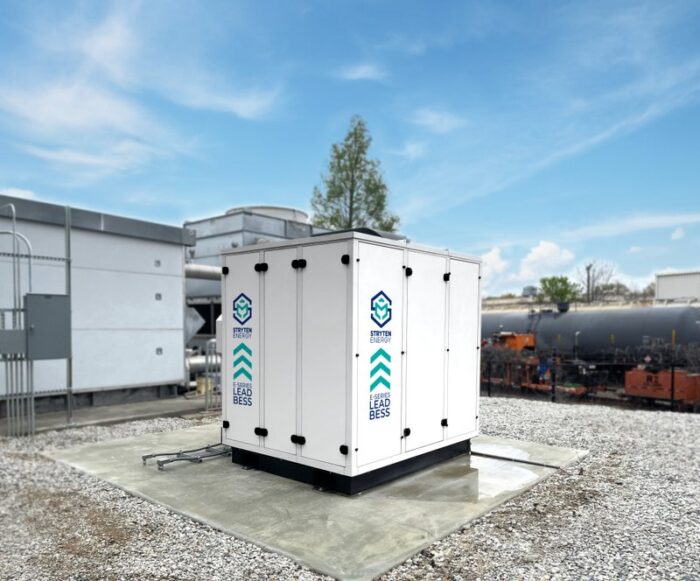Georgia Tech pilots commercial-scale lead battery from Stryten Energy

The Georgia Institute of Technology and Stryten Energy LLC, a U.S.-based energy storage solutions provider, announced the successful installation of Stryten Energy’s Lead Battery Energy Storage System (BESS) at the Carbon Neutral Energy Solutions Laboratory (CNES). The installation aims to create a living-learning lab on campus that supports research and real-world applications of medium-duration energy storage solutions.
“Georgia Tech’s strategic plan envisions our campus as a dynamic laboratory and experimental test bed, where sustainable practices are seamlessly integrated into our operations,” said Christine Conwell, SEI’s interim executive director. “Through enduring partnerships with organizations like Stryten, we are creating mini ecosystems that yield valuable situational data to help chart a path for innovative energy research well beyond the campus.”
Lead Battery Energy Storage
Lead BESS was selected for this initial installation due to its cost-effectiveness, high discharge rates, and recyclability, backed by extensive research demonstrating its reliable performance. Stryten Energy is particularly focused on deploying this Lead BESS unit in commercial and industrial microgrids and paired with EV charging stations.
“As solar and other renewables hit the market years ago, large utility-scale implementations were clearly the focus,” said Scott Childers, vice president of essential power at Stryten Energy. “With the introduction of this BESS powered by lead batteries, we see behind-the-meter applications getting their day in the sun.”
The Stryten Energy BESS is a dynamic storage system that integrates renewable energy sources into the existing power mix, providing stable and dependable backup power and reducing grid dependency during peak hours. With its additional components and software, the system is capable of bi-directional charging, allowing current to flow into the battery for charging and out of the battery to power the grid or microgrid.
Georgia Tech BESS research
Georgia Tech is an eager partner here. The lab installation will be “demonstrating the advantages of lead BESS from cost savings, technology, environmental, and safety perspectives,” Childers says.
The CNES building is located in the North Avenue Research Area of the Georgia Tech campus and houses the Strategic Energy Institute (SEI), an interdisciplinary research institute focused on energy research.
Richard Simmons, SEI’s director of research and studies, called the Stryten lead BESS system an enabling piece of the Distributed Energy Resources (DER) puzzle. At the CNES lab, Georgia Tech researchers can now control charging and discharging cycles for the battery in coordination with the existing Solar PV array and the new EV charging test bed. This research tool will allow the time-shifting of peak solar input by several hours to meet late afternoon building loads and store renewable energy for the overnight charging of campus vehicles.
The role of DERs in the broader energy landscape is a crucial area of research, particularly understanding their impact on the grid, their contribution to system reliability, and their effect on energy costs. This research is especially important in the context of the ongoing transition to clean energy.
“It is our hope that the lead BESS will be one of several living lab battery pilots at Georgia Tech,” Simmons said. “Along with regional partners, our researchers are exploring similar R&D and testing projects involving flow batteries that can facilitate longer-duration storage, as well as lithium-ion BESS that may integrate second-life EV battery modules for grid resilience, driving advancements in sustainable energy research.”




